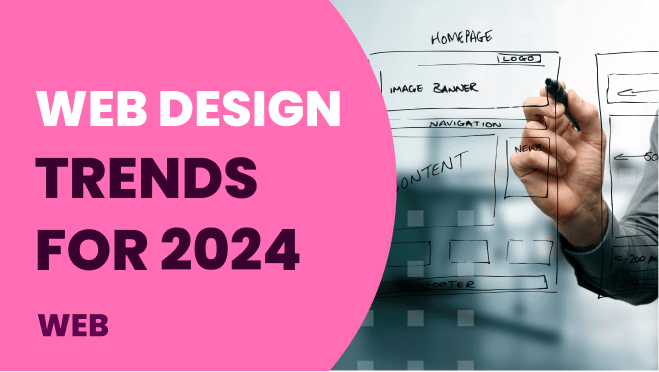Rise by Six: Your Daily Dose of Inspiration
Explore insights and stories that elevate your day.
Web Design Trends That Make Your Site Sizzle
Discover sizzling web design trends that will elevate your site and captivate visitors—get ready to stand out and boost engagement!
Top 5 Web Design Trends to Watch in 2023
As we move further into 2023, the landscape of web design continues to evolve rapidly, influenced by technological advancements and changing user preferences. One of the most significant trends is minimalism, which emphasizes simplicity and efficiency. By stripping away unnecessary elements, designers can create clean, efficient layouts that improve user experience. This trend is complemented by the use of micro-interactions, which add a layer of engagement and responsiveness to websites. These subtle animations, whether in buttons or loading screens, enhance user satisfaction without overwhelming the interface.
Another trend gaining traction in 2023 is the dark mode aesthetic. This design choice not only reduces eye strain but also provides a sleek, modern appearance that many users prefer. Additionally, the use of bold typography is on the rise. Large, eye-catching fonts can create a strong visual hierarchy and grab users' attention effectively. Finally, as mobile usage continues to soar, the importance of responsive design cannot be overstated. Websites that adapt seamlessly to any device are crucial for keeping users engaged and satisfied, making this an essential trend to incorporate in your web design strategy.

How to Incorporate Minimalism in Your Web Design
Incorporating minimalism in your web design can significantly enhance user experience by creating a clean and distraction-free interface. Start by focusing on the essential elements of your site, ensuring that each component serves a specific purpose. Utilize ample white space to allow your content to breathe, making it easier for visitors to navigate and absorb information. Additionally, choose a limited color palette that is both visually pleasing and functional, helping to guide the user's eye to important areas of the page.
Another effective strategy to achieve a minimalist design is to streamline your typography. Select fonts that are easy to read and consistent throughout your site. Aim for a maximum of two to three typefaces that complement each other and adhere to your brand identity. Images should also be used sparingly; opt for high-quality visuals that resonate with your message without overwhelming the viewer. By implementing these practices, you will create a web design that prioritizes content and usability, ultimately leading to greater engagement and satisfaction from your audience.
Are Micro-Interactions the Secret Sauce for Engaging Websites?
Micro-interactions are the small, subtle animations or responses that occur during a user's interaction with a website, often unnoticed but impactful in enhancing the overall user experience. These elements, such as button animations, loading indicators, or hover effects, play a significant role in guiding users through a website. They provide immediate feedback, making the interface feel more intuitive and responsive. This level of feedback is crucial, as it helps users understand that their actions are being acknowledged, thereby reducing frustration and improving engagement.
Incorporating micro-interactions can significantly boost user retention and satisfaction rates. For instance, when a user uploads a file, a playful animation can transform a mundane task into an enjoyable experience. Additionally, these elements encourage users to explore further and interact more deeply with the content. As a result, businesses looking to build an engaging website should consider how micro-interactions can act as the secret sauce, turning a standard website into a dynamic platform that captivates and holds visitors' attention.